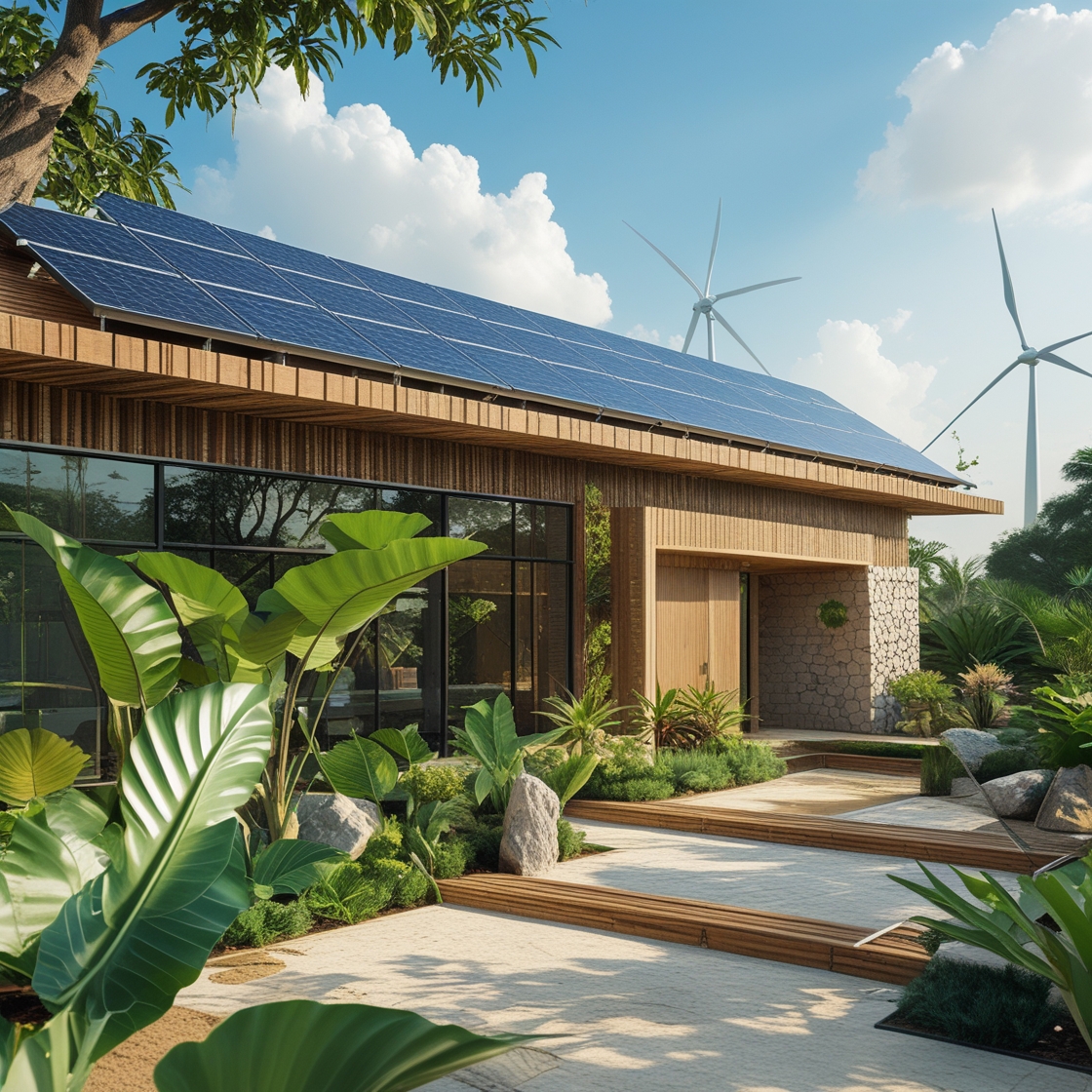The Importance of Sustainable Architecture in Pakistan
Introduction
Sustainable architecture is becoming increasingly important in today’s world, especially in countries like Pakistan where urbanization is rapidly increasing, and environmental challenges are on the rise. As the demand for housing and infrastructure grows, it is essential to ensure that the buildings we design are not only functional and aesthetically pleasing but also environmentally responsible. This article explores the importance of sustainable architecture in Pakistan and how it can help address the country’s ecological, social, and economic challenges.
1. Addressing Climate Change in Pakistan
Pakistan is one of the most vulnerable countries to the effects of climate change, facing issues such as extreme temperatures, flooding, and water scarcity. Sustainable architecture can play a key role in mitigating these effects by promoting energy-efficient designs and environmentally friendly materials.
-
Energy Efficiency: Sustainable buildings are designed to use less energy for heating, cooling, and lighting. By incorporating energy-efficient technologies such as solar panels, natural ventilation, and energy-efficient insulation, architects can reduce the overall energy consumption of a building.
-
Water Conservation: With water scarcity being a growing concern in Pakistan, sustainable architecture also focuses on water conservation. Rainwater harvesting systems, low-flow fixtures, and water-efficient landscaping can help reduce water consumption in buildings.
2. Reducing Carbon Footprint
Buildings contribute significantly to carbon emissions due to the energy they consume for heating, cooling, and powering electrical systems. Sustainable architecture seeks to minimize the carbon footprint of a building by incorporating renewable energy sources and reducing the reliance on fossil fuels.
-
Solar Energy: Pakistan has abundant sunlight, making solar energy an ideal solution for reducing a building’s dependence on traditional power sources. Solar panels can be installed on rooftops to generate electricity, reducing electricity bills and the building’s carbon footprint.
-
Green Building Materials: Sustainable architecture promotes the use of locally sourced and eco-friendly materials such as bamboo, recycled steel, and concrete made from industrial by-products. These materials not only reduce environmental impact but also contribute to the durability and longevity of the building.
3. Enhancing Livability and Health
Sustainable architecture is not just about reducing environmental impact; it also focuses on creating healthy and livable spaces for the occupants. By integrating elements such as natural lighting, good air quality, and proper ventilation, sustainable buildings improve the overall well-being of their residents.
-
Natural Light: Sustainable designs often incorporate large windows, skylights, and open spaces to allow natural light into the building, reducing the need for artificial lighting and improving the overall mood and health of the occupants.
-
Indoor Air Quality: The use of non-toxic materials and proper ventilation systems ensures that the indoor air quality remains high, which is crucial for the health of the residents. Poor air quality can lead to respiratory problems and other health issues, which can be avoided through sustainable design practices.
4. Economic Benefits of Sustainable Architecture
While sustainable architecture may initially require a larger investment, it offers long-term economic benefits. Buildings that are energy-efficient and made from durable materials tend to have lower operational and maintenance costs over their lifespan.
-
Reduced Energy Costs: By incorporating energy-efficient systems such as solar panels, LED lighting, and high-performance insulation, sustainable buildings reduce energy bills, making them more cost-effective in the long run.
-
Increased Property Value: As demand for eco-friendly homes and buildings rises, properties designed with sustainable principles are likely to have a higher resale value. Buyers are becoming more conscious of the environmental impact of their homes, making sustainable properties more attractive.
5. Preserving Pakistan’s Natural Resources
Pakistan’s natural resources are depleting rapidly due to unsustainable building practices and excessive consumption. Sustainable architecture aims to reduce the exploitation of these resources by promoting eco-friendly construction practices.
-
Sustainable Construction Practices: The use of sustainable construction techniques, such as modular construction and prefabricated materials, reduces waste and the need for new raw materials. This helps in conserving the country’s natural resources while reducing the environmental impact of construction.
-
Recycling and Upcycling: In sustainable architecture, recycling and upcycling old materials are essential. For example, old bricks, wood, and metal can be reused to build new structures, reducing the need for new resources and minimizing waste.
6. Adapting to Pakistan’s Unique Climate
Pakistan has diverse climates, ranging from the hot desert conditions of Sindh and Balochistan to the cold mountainous regions of the north. Sustainable architecture can be tailored to suit these varying climates by using local materials and climate-appropriate designs.
-
Passive Design: Passive design techniques, such as orienting buildings to maximize natural cooling and heating, can be adapted to Pakistan’s hot and humid climate. For example, buildings in hot areas can be designed with thick walls and small windows to minimize heat gain, while buildings in cooler regions can make use of south-facing windows to capture sunlight.
-
Insulation and Thermal Mass: Effective insulation helps maintain a comfortable temperature inside the building, reducing the need for artificial heating and cooling. This is particularly important in areas with extreme temperatures, such as the northern regions of Pakistan.
Conclusion
Sustainable architecture is not just a trend, but a necessity for Pakistan’s future. With the growing challenges of climate change, resource depletion, and urbanization, it is essential that architects and builders adopt sustainable practices in their designs. By prioritizing energy efficiency, water conservation, and the use of eco-friendly materials, sustainable architecture can help Pakistan reduce its environmental impact, improve the quality of life for its citizens, and ensure a healthier, more prosperous future for generations to come.

